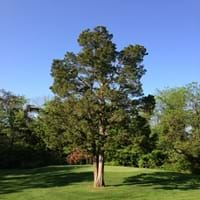Life Span
Biennial
Perennial
Type
Perennial
Needled or Scaled Evergreen
Origin
Texas
Northeastern United States, Mid-Atlantic United States, Southeastern United States, North-Central United States, Central United States, South-Central United States, Canada
Types
Not available
Eastern juniper, Souther juniper
Number of Varieties
Not Available
Habitat
Forests, meadows, Pastures, Prairies, savannahs, Woodland edges
Lower slopes, Open Plains, Prairies, Woodlands, Woods
USDA Hardiness Zone
8-10
3-7
Sunset Zone
H1, 8, 9, 12, 13, 14, 15, 16, 17, 18, 19, 20, 21, 22, 23, 24
A3, 1a, 1b, 2a, 2b, 3a, 3b, 4, 5, 6, 7, 8, 9, 10, 11, 12, 13, 14, 15, 16, 17, 18, 19, 20, 21, 22, 24
Habit
Upright/Erect
Pyramidal
Flower Color
White, Lemon yellow, Light Pink
Light Red, Sky Blue, Yellow Brown
Flower Color Modifier
Bicolor
Bicolor
Fruit Color
Tan
Light Blue
Leaf Color in Spring
Green
Dark Green
Leaf Color in Summer
Green
Dark Green
Leaf Color in Fall
Not Available
Dark Green
Leaf Color in Winter
Light Green
Dark Green, Bronze
Leaf Shape
Alternate
Irregular
Plant Season
Spring, Summer
Spring, Summer, Fall, Winter
Sunlight
Full Sun, Partial Sun
Full Sun, Partial Sun
Type of Soil
Loam, Sand
Clay, Loam, Sand
The pH of Soil
Neutral, Alkaline
Acidic, Neutral, Alkaline
Soil Drainage
Well drained
Well drained
Bloom Time
Early Spring, Spring, Late Spring, Early Summer, Late Winter
Late Spring
Tolerances
Drought
Drought, Dry soil, Heat Tolerance
Where to Plant?
Container, Ground, Pot
Ground
How to Plant?
Seedlings
Seedlings, Stem Planting
Plant Maintenance
Medium
Low
Watering Requirements
Average Water Needs, Do Not over Water, Keep the Soil well drained, Requires regular watering
Average Water Needs, Do Not over Water, Never Over-water, Requires regular watering, Requires watering in the growing season, Water daily during growing season
In Summer
Lots of watering
Lots of watering
In Spring
Moderate
Average Water
In Winter
Average Water
Average Water
Soil pH
Neutral, Alkaline
Acidic, Neutral, Alkaline
Soil Type
Loam, Sand
Clay, Loam, Sand
Soil Drainage Capacity
Well drained
Well drained
Sun Exposure
Full Sun, Partial Sun
Full Sun, Partial Sun
Pruning
Remove damaged leaves, Remove dead branches, Remove dead leaves
Remove damaged leaves, Remove dead branches, Remove dead leaves
Fertilizers
All-Purpose Liquid Fertilizer
Compost
Pests and Diseases
Pests and diseases free, Red blotch
Gall Insects, Red blotch, Rust, Sooty Mold
Plant Tolerance
Drought
Drought, Dry soil, Heat Tolerance
Flower Petal Number
Single
Single
Fragrant Bark/Stem
No
Yes
Foliage Texture
Medium
Medium
Foliage Sheen
Matte
Glossy
Invasive
Sometimes
Sometimes
Attracts
Bugs, Butterflies, Insects
Insects
Allergy
Abdominal pain, Anxiety, Inflammation, Low blood pressure
Asthma, breathing problems
Aesthetic Uses
Beautification, Decorating walls, Hanging Basket, Showy Purposes, Used as an interior landscaping species, Used for decorating walls, fences, gates, hedges, etc.
Beautification, Bonsai, Landscape Designing, Showy Purposes
Beauty Benefits
Skin irritation, Skin Problems
Good for skin and hair
Environmental Uses
Air purification
Air purification, Food for insects, Indoor Air Purification, Prevent Soil Erosion, Shadow Tree, Shelter for wildlife, Versatility, Very little waste, Wildlife
Medicinal Uses
Eczema, Menstrual Cramps, Menstrual Disorders
Cold, Cough
Part of Plant Used
Flowers, Root, Seeds, Stem
Leaves
Other Uses
Beneficial species for attracting pollinators, deer resistant, Edible seed
Decoration Purposes, Showy Purposes, Used as Ornamental plant, Used for its medicinal properties
Used As Indoor Plant
Yes
Yes
Used As Outdoor Plant
Yes
Yes
Garden Design
Mixed Border, Rock Garden, Wall, Wildflower
Feature Plant, Foundation, Mixed Border, Screening, Wind Break, Shade Trees, Street Trees
Botanical Name
OENOTHERA mexicana
JUNIPERUS virginiana
Common Name
pinkladies, pink evening primrose, showy evening primrose, Mexican primrose, and amapola.
Pencil cedar, Red Juniper
In Hindi
Mexican primrose
पूर्वी लाल देवदार
In German
Rosa Nachtkerze
Eastern Red Cedar
In French
Mexican primrose
Red Cedar Orient
In Spanish
Primrose mexicana
Cedro Rojo del Este
In Greek
Μεξικού Primrose
Ανατολική Red Cedar
In Portuguese
Mexican Primrose
Eastern Red Cedar
In Polish
Mexican Primrose
Eastern Red Cedar
In Latin
Mexicanus Primrose
Eastern Red Cedar
Phylum
Tracheophyta
Tracheophyta
Class
Magnoliopsida
Pinopsida
Family
Onagraceae
Cupressaceae
Genus
Oenothera
Juniperus
Clade
Angiosperms, Eudicots, Rosids
Not Available
Subfamily
Onagroideae
Cupressoideae
Number of Species
Not Available
Season and Care of Mexican primrose and Eastern Red Cedar
Season and care of Mexican primrose and Eastern Red Cedar is important to know. While considering everything about Mexican primrose and Eastern Red Cedar Care, growing season is an essential factor. Mexican primrose season is Spring and Summer and Eastern Red Cedar season is Spring and Summer. The type of soil for Mexican primrose is Loam, Sand and for Eastern Red Cedar is Clay, Loam, Sand while the PH of soil for Mexican primrose is Neutral, Alkaline and for Eastern Red Cedar is Acidic, Neutral, Alkaline.
Mexican primrose and Eastern Red Cedar Physical Information
Mexican primrose and Eastern Red Cedar physical information is very important for comparison. Mexican primrose height is 15.20 cm and width 25.40 cm whereas Eastern Red Cedar height is 1,520.00 cm and width 460.00 cm. The color specification of Mexican primrose and Eastern Red Cedar are as follows:
Mexican primrose flower color: White, Lemon yellow and Light Pink
Mexican primrose leaf color: Green
Eastern Red Cedar flower color: Light Red, Sky Blue and Yellow Brown
- Eastern Red Cedar leaf color: Dark Green
Care of Mexican primrose and Eastern Red Cedar
Care of Mexican primrose and Eastern Red Cedar include pruning, fertilizers, watering etc. Mexican primrose pruning is done Remove damaged leaves, Remove dead branches and Remove dead leaves and Eastern Red Cedar pruning is done Remove damaged leaves, Remove dead branches and Remove dead leaves. In summer Mexican primrose needs Lots of watering and in winter, it needs Average Water. Whereas, in summer Eastern Red Cedar needs Lots of watering and in winter, it needs Average Water.





